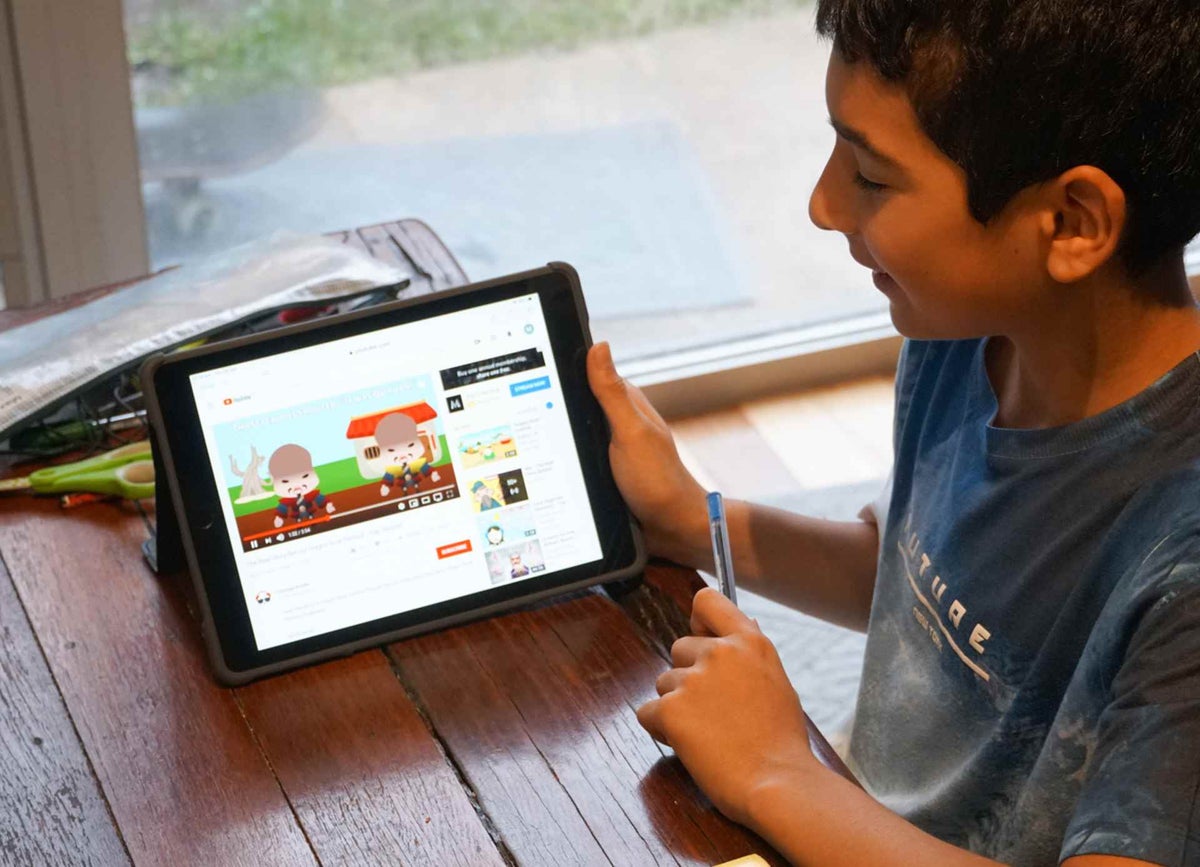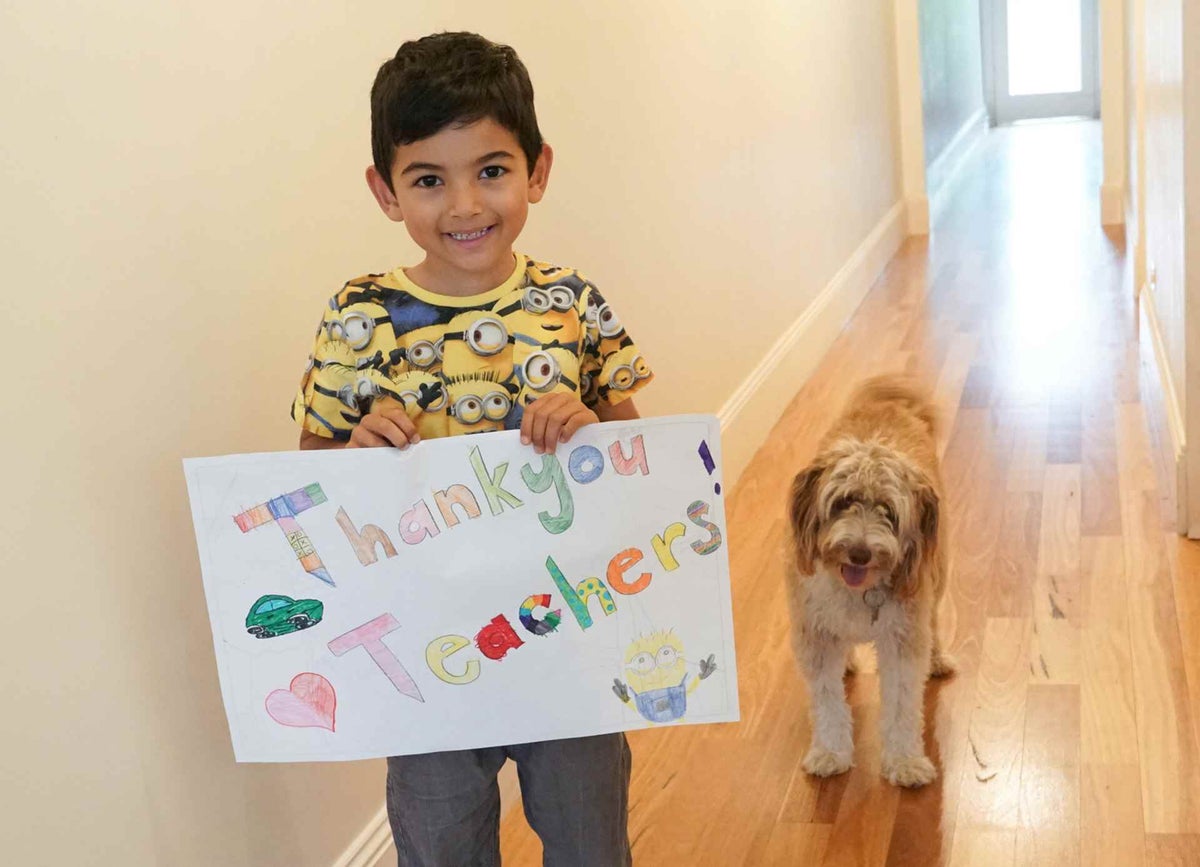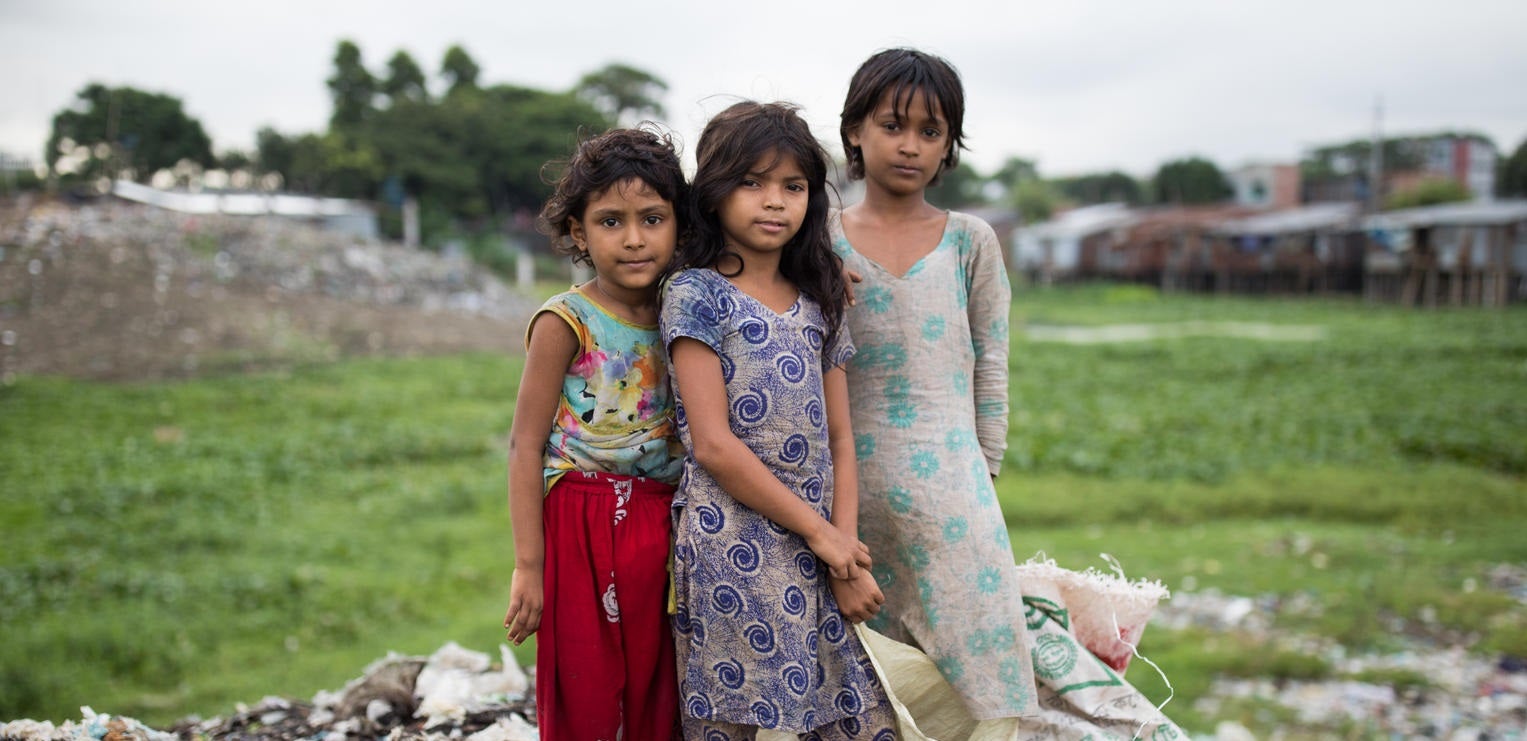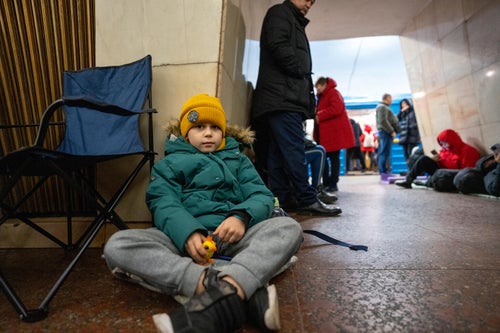Teachers have been the frontline workers for children during the coronavirus pandemic. They have quickly moved to bring classrooms online and found fun and interesting ways to keep children across Australia engaged. This is what 'working from home' has been like for teachers:
1. What has been the hardest part about moving your classes online?
The hardest part has been the time pressure and trying to get four and five-year-olds, who are still learning sounds and letters, to type their names and passwords onto devices at home. - South Sydney kindergarten teacher
2. What has been the biggest challenge and why?
Not all families have access to either consistent learning devices and or internet access. So, I am providing paper packages for those students and families. Being able to log in every day is not a reality for most students in my class. Not being able to connect with them daily is difficult. - Regional primary school teacher
3. What are you proud of?
I’m proud of my exceptionally talented colleagues in my faculty who were patient with me and taught me how to create a meet, to record a video, and to display different files on the screen in a live stream. I’m proud of my students who adapted so quickly and continued to work hard regardless. I’m proud of all the teachers across Australia who held it together and worked their “butts” off. - Sydney highschool teacher

"I miss seeing the students' faces, the banter, the fun in the classroom."
4. How do you think your students have adapted?
I teach high school students and so the majority of students have been able to adapt quite well with remote learning within my subject area. However, I am worried about the weaker students in my class who cannot get the same support as they would get in an actual classroom. It works for many but not for all. I think what has been hardest for students in general is missing the social aspect that going to school brings.- Sydney highschool teacher
5. How much work has it been moving your classes online?
It has been an enormous workload to move classes online. I don’t think I have ever worked so hard. I can honestly say that in the first two weeks I was working from 7pm to 1am every night as well as being online for each class every day with a full teaching load. Not only preparing work but checking attendance and homework for each student and ringing home for defaulters took up the majority of the time.
Scanning exam papers and sending them to students one at a time for senior classes is an added effort as well. It’s trying to do the same as what is done in a physical classroom but moving all these processes online just increased the workload immensely. - Sydney highschool teacher
6. What do you miss about teaching in person?
I miss seeing the students’ faces, the banter, the fun in the classroom. It’s certainly easier teaching face to face as well. - Sydney highschool teacher

7. What are your biggest concerns about online teaching?
My biggest concern is the difficulty in chasing up students who are not submitting homework online. At school, I can stop them, question them, help them and come to a solution with the issue. Online they can evade you by ignoring you.
My other major concern is the inequity across the state. Some students might not have internet at home or have to share a computer with several siblings. Maybe they share a bedroom or living space to do their work. Some students don’t have a camera or video option on their computer or a scanner or printer at home. Learning from home will not suit every household and definitely will not suit the disadvantaged. - Sydney highschool teacher
8. What was it like working at school when the coronavirus outbreak had hit Australia?
It was frightening working during the peak time of COVID-19. Everyone around me was working from home to flatten the curve and keep us all safer but for some reason teachers were an exception to the rule.
Social distancing in a school environment is very difficult. My junior classrooms contain 30 students and my senior classrooms contain 24 students plus me walking around helping students with their work. We also share our staff room with 35 other staff members. Teachers as well as students catch public transport to get to school adding another uncertainty. You were afraid that you would bring the virus home to your family and elderly parents.
I have always been proud to be a teacher but I did feel that finally teachers were being acknowledged for their commitment and hard work. People cannot fathom the amount of work that goes into teaching unless they are a teacher themselves or live with a teacher.
Parents to some extent had to become a teacher at home, monitoring and motivating their child to do work. This gave them a small glimpse into what the job entails. The appreciation was a nice feeling. - Sydney highschool teacher

9. What motivated you to keep going to school?
All students deserve the right to learn, it was important for me to continue to provide this equal opportunity for them so they can continue to shine and reach their potential. - Rural primary school teacher
You do it for the students. That is what keeps you going always. They are depending on you. We had no choice in the matter. - Sydney highschool teacher
10. Why do you love teaching?
Teaching gives you the reward that very few other jobs give you. You actually have the opportunity to make a difference in a person’s life – you help them achieve part of their dream.
When a student improves because of your teaching then that is satisfying. It’s being passionate about your subject and passing that enthusiasm onto others. I have had so many students that have been inspired to study maths at university and some have even become maths teachers.
One day when I retire I look forward to reading all the thank you cards I received from all my students over the years that live in one big box. I know it will bring a smile to my face. - Sydney highschool teacher
11. Why did you become a teacher?
Initially, I actually wanted to be a pharmacist but luckily I missed out on getting in by 4 marks. So then, I was either going to do Chemical Engineering or Maths teaching. My dad encouraged me to do the latter as it was one of the most respected jobs in his country of origin.
I loved maths at school, it was my best subject and I had a very inspiring teacher in my senior years and with that I decided to become a maths teacher. There was always the option to transfer but I loved teaching so much that I was not interested in changing courses. Sometimes things are just meant to be. - Sydney highschool teacher

Other useful resources:
Quick FAQs about COVID-19
A novel coronavirus (CoV) is a new strain of coronavirus. The disease caused by the novel coronavirus first identified in Wuhan, China, has been named coronavirus disease 2019 (COVID-19) – ‘CO’ stands for corona, ‘VI’ for virus, and ‘D’ for disease.
Formerly, this disease was referred to as ‘2019 novel coronavirus’ or ‘2019-nCoV.’ The COVID-19 virus is a new virus linked to the same family of viruses as Severe Acute Respiratory Syndrome (SARS) and some types of common cold.
The virus is transmitted through direct contact with respiratory droplets of an infected person (generated through coughing and sneezing), and touching surfaces contaminated with the virus. The COVID-19 virus may survive on surfaces for several hours, but simple disinfectants can kill it.
Symptoms can include fever, cough and shortness of breath. In more severe cases, infection can cause pneumonia or breathing difficulties. More rarely, the disease can be fatal.
These symptoms are similar to the flu (influenza) or the common cold, which are a lot more common than COVID-19. This is why testing is required to confirm if someone has COVID-19.
It’s important to remember that key prevention measures are the same – frequent hand washing, and respiratory hygiene (cover your cough or sneeze with a flexed elbow or tissue, then throw away the tissue into a closed bin). Also, there is a vaccine for the flu – so remember to keep yourself and your child up to date with vaccinations.
Here are four precautions you and your family can take to avoid infection:
1. Wash your hands frequently using soap and water or an alcohol-based hand rub
2. Cover your mouth and nose with a flexed elbow or tissue, when coughing or sneezing, and throw away the tissue into a closed bin
3. Avoid close contact with anyone who has cold or flu-like symptoms
4. Go to the doctor if you have a fever, cough or feel that it is difficult to breathe
Related articles
Stay up-to-date on UNICEF's work in Australia and around the world
















